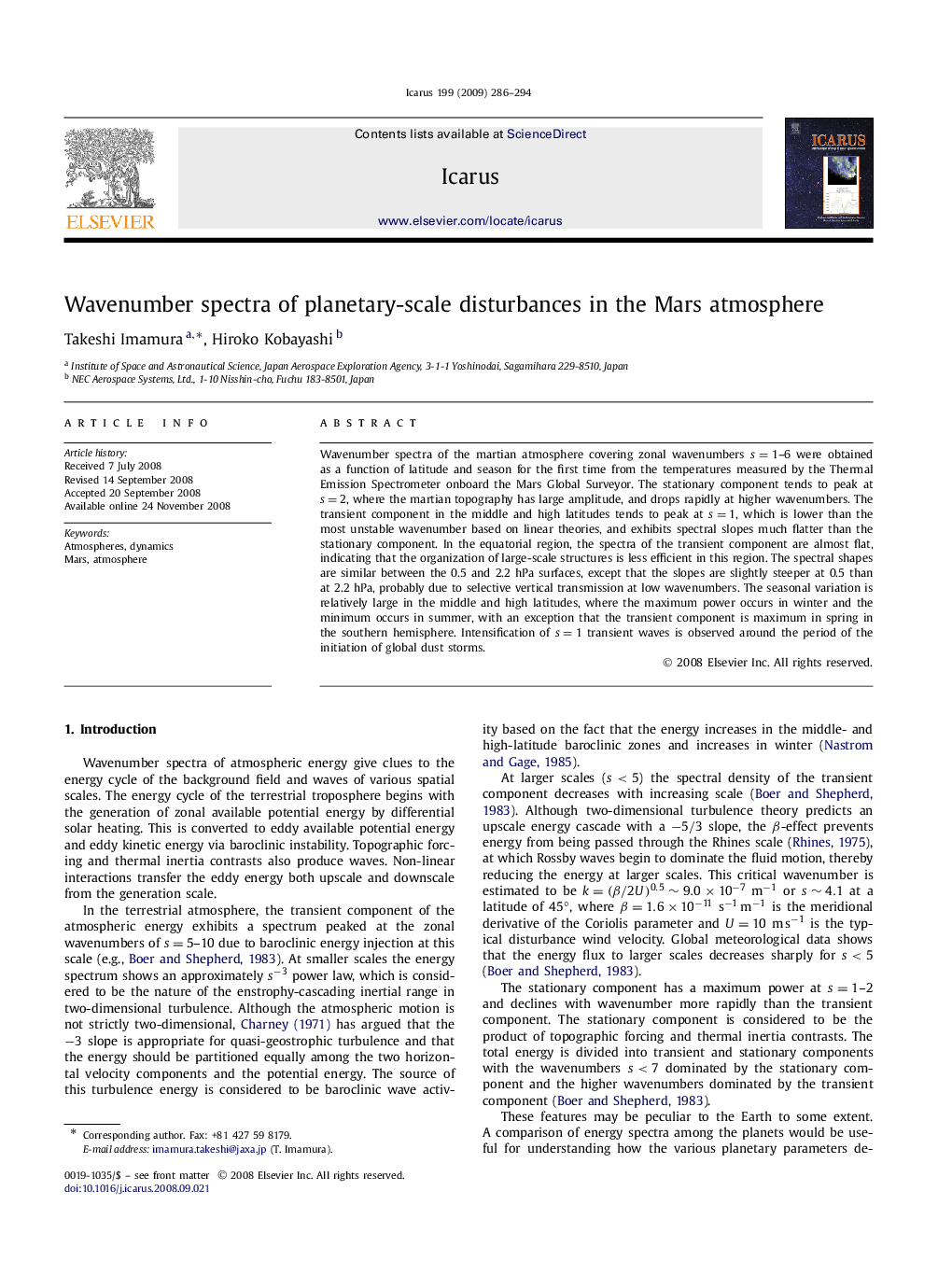| Article ID | Journal | Published Year | Pages | File Type |
|---|---|---|---|---|
| 1775530 | Icarus | 2009 | 9 Pages |
Abstract
Wavenumber spectra of the martian atmosphere covering zonal wavenumbers s=1-6 were obtained as a function of latitude and season for the first time from the temperatures measured by the Thermal Emission Spectrometer onboard the Mars Global Surveyor. The stationary component tends to peak at s=2, where the martian topography has large amplitude, and drops rapidly at higher wavenumbers. The transient component in the middle and high latitudes tends to peak at s=1, which is lower than the most unstable wavenumber based on linear theories, and exhibits spectral slopes much flatter than the stationary component. In the equatorial region, the spectra of the transient component are almost flat, indicating that the organization of large-scale structures is less efficient in this region. The spectral shapes are similar between the 0.5 and 2.2 hPa surfaces, except that the slopes are slightly steeper at 0.5 than at 2.2 hPa, probably due to selective vertical transmission at low wavenumbers. The seasonal variation is relatively large in the middle and high latitudes, where the maximum power occurs in winter and the minimum occurs in summer, with an exception that the transient component is maximum in spring in the southern hemisphere. Intensification of s=1 transient waves is observed around the period of the initiation of global dust storms.
Keywords
Related Topics
Physical Sciences and Engineering
Earth and Planetary Sciences
Space and Planetary Science
Authors
Takeshi Imamura, Hiroko Kobayashi,
